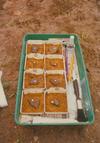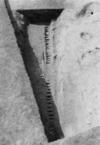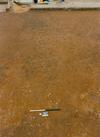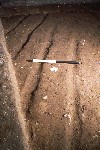The Sutton Hoo Research Project 1983-2001
Martin Carver, 2004. https://doi.org/10.5284/1000266. How to cite using this DOI
Data copyright © Prof Martin Carver unless otherwise stated
This work is licensed under the ADS Terms of Use and Access.
Primary contact
Prof
Martin
Carver
Department of Archaeology
University of York
King's Manor
Exhibition Square
York
YO1 7EP
England
Resource identifiers
- ADS Collection: 404
- DOI:https://doi.org/10.5284/1000266
- How to cite using this DOI
Downloads
Site Album : Prehistory

Post-holes of the Bronze Age enclosure crossing the back-filled Early Bronze Age ditch in Int 41, 1988.

Excavation of the Beaker pit complex in Int 55. Madeleine Hummler and team working in the cold spring of 1992 [Photo: Powergen Plc].

Early Bronze Age ditch (foreground) and Iron Age ditch (centre) cut by 19th century robber pit. The robbed Mound 5 burial pit is to the right of the picture.
























